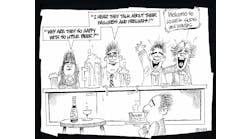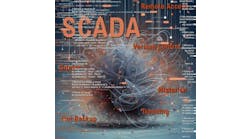What have you done for me lately? And how much?
Everyone knows that process automation delivers efficiencies and time and labor savings, but it seems that few users can calculate these gains and express them in dollars and cents.
Maybe engineers are so focused on keeping their applications running that they forget to keep score, or perhaps they see automations benefits as so obvious that its gains arent worth calculating. Whatever the reason, specific benefits analyses often dont reach management levels. This is unfortunate because administrators need to be reminded frequently about why its crucial for them to fund their applications process automation capabilities.
To give engineers some of these financial tools, John Dolenc, PE, principal consulting engineer for Emerson Process Managements Advanced Applied Technologies Division, presented Estimating Benefits from Process Automation this week at the 2007 Emerson Global Users Exchange at the Gaylord Texan Resort and Convention Center in Grapevine, Texas.
The justification for process automation modernization is one of the most difficult steps to complete during the planning process. Emersons John Dolenc offered a back-to-basics tutorial quantifying the benefits of automation in language even a bean counter can understand.
Dolenc demonstrated three main financial tools for estimating process automation benefits: the best-operator method, the data-reduction method and the percent-limit-violation method. Just employing these accounting practices can help make a projects case because theyre published methods that are widely used in business.
To begin the search for benefits, Dolenc said engineers should try to think of their plant as a financial asset or entity. This means looking at the facility much like a balance sheet with raw materials, net utilities, operating expenses, maintenance costs and new capital going in, and primary and secondary products and waste streams coming out.
Basically, to calculate return on invested capital (ROIC), users must divide profit by invested capital: ROIC = profit/invested capital.
To begin the best-operator method, Dolenc continued, users need to identify and retrieve historical data, including key performance indicators, important manipulated variables, constraint variables, and material and energy balance parameters. They must also obtain data while plant is running at normal operating conditions and make sure that data-sampling frequency matches type of data collected. This historical data can then be used to compare:
- Operating data between the historical best versus average results,
- Normal operating results versus when engineers are running the operation,
- Normal results versus those obtained during continuous monitoring demanded by a process optimization or alteration,
- Two similar plants, except when one has automation and the other uses manual control.
Best-operator is a conservative method because it doesnt account for improvements. Its expressed mathematically as ∆ value = (|average variable best operator variable|) x average rate.
Similarly, the data-reduction method begins by collecting raw data over an appropriate time interval, such as hourly averages/week, shift averages/month, daily averages/year, and then removing startup/shutdown and upset data. Next, the data is normalized to a production rate, plotted in a histogram, and the resulting values are subtracted at the median and the 15% points. This difference indicates potential economic benefit.
In addition, the limit-violation method involves calculating old and new performance averages for a given process, identifying how much of each falls beyond the process limit or product specification, and comparing the two. The same percent-limit-violation method involves calculating the average and then calculating the standard deviation. These are expressed as:
- Z = (L -AvgO)/SDO
- Z = (L -AvgN)/SDN
- (L - AvgN)/SDN = (L -AvgO)/SDO
- AvgN = L SDN/SDO x (L AvgO)
Financial justification is difficult, but its necessary for automation to receive the approval it needs, concluded Dolenc. To justify a project, its vital to collect historical data, build a base case and provide some prediction of results.
For more information on calculating financial benefits, Dolenc also recommends:
- Estimating Benefits from Advanced Control by P.L. Latour, J.H. Sharpe, M.C. Delaney (www.ISA.org)
- Estimating Savings from Upgrading Process Control by Herman Bozenhardt and Martin Dybeck (Chemical Engineering magazine, Feb. 3, 1986)
- "Calculating ROI for Automation Projects by Doug White (part of the Advanced Automation Services whitepaper, and located at www.EmersonProcess.com)




